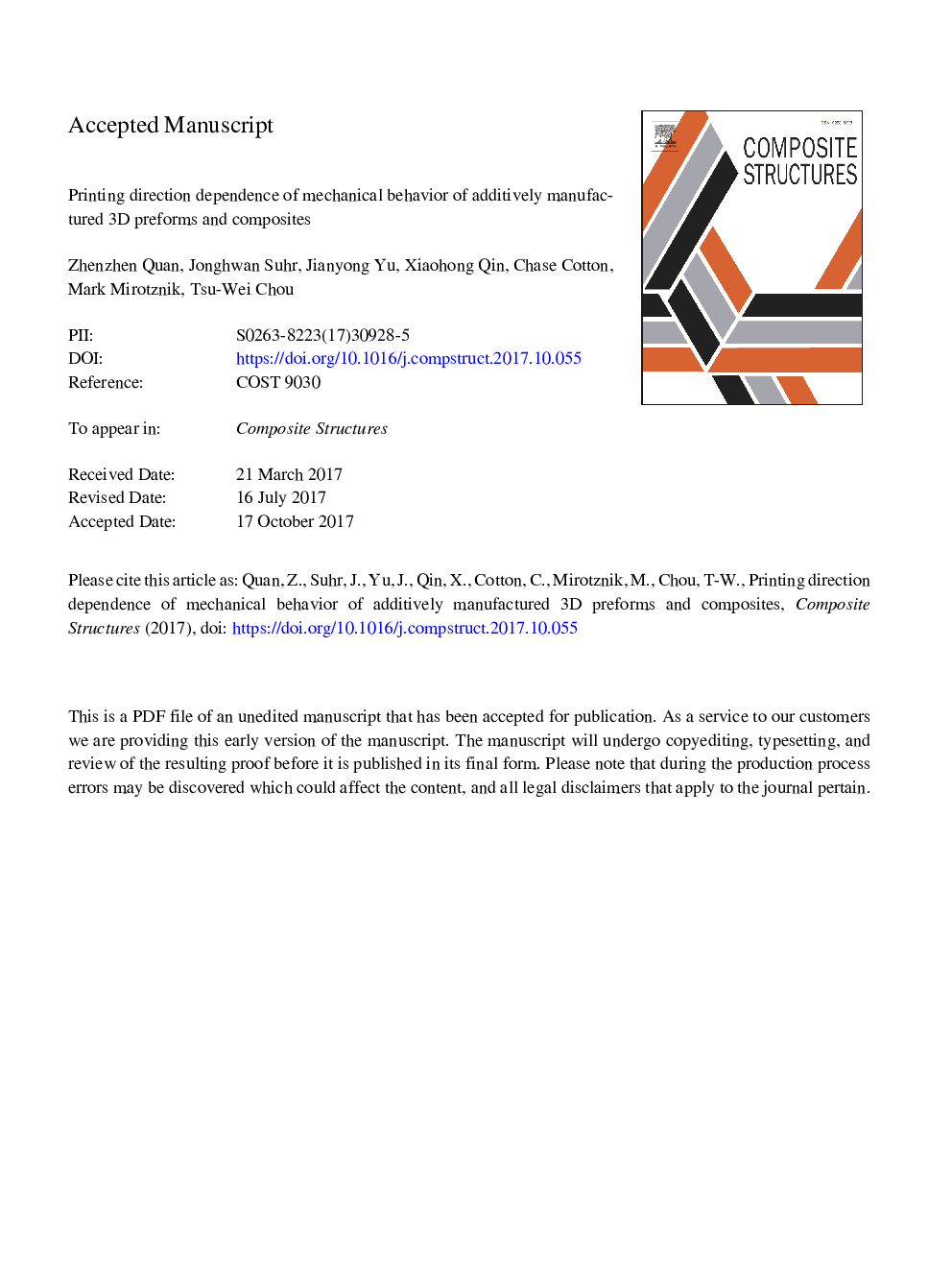| Article ID | Journal | Published Year | Pages | File Type |
|---|---|---|---|---|
| 6704976 | Composite Structures | 2018 | 17 Pages |
Abstract
Among the processing parameters of additive manufacturing, printing direction is of critical importance. While studies on effects of printing direction have so far mainly focused on mechanical properties of solid specimens, the present research is intended to demonstrate printing direction dependence of mechanical behavior of additively manufactured 3D preforms and their composites. Compressive behavior of additively manufactured 3D braid preforms and composites was investigated for three distinct printing directions (0°, 45° and Z-direction). Fused filament fabrication (FFF) of acrylonitrile-butadiene-styrene (ABS) filament and short carbon fiber/ABS (CF/ABS) filament was adopted. First, solid cube specimens were fabricated; the parts printed along 0° and 45° directions showed more fabrication-induced pores. Then, 3D braid preforms were fabricated and infused with silicone matrix. For preforms printed along 45° direction, inter-yarn adhesion was observed, which enhanced specimen initial modulus. On the other hand, Z-direction specimens showed higher structural ductility, due to inter-yarn slippage.
Related Topics
Physical Sciences and Engineering
Engineering
Civil and Structural Engineering
Authors
Zhenzhen Quan, Jonghwan Suhr, Jianyong Yu, Xiaohong Qin, Chase Cotton, Mark Mirotznik, Tsu-Wei Chou,
